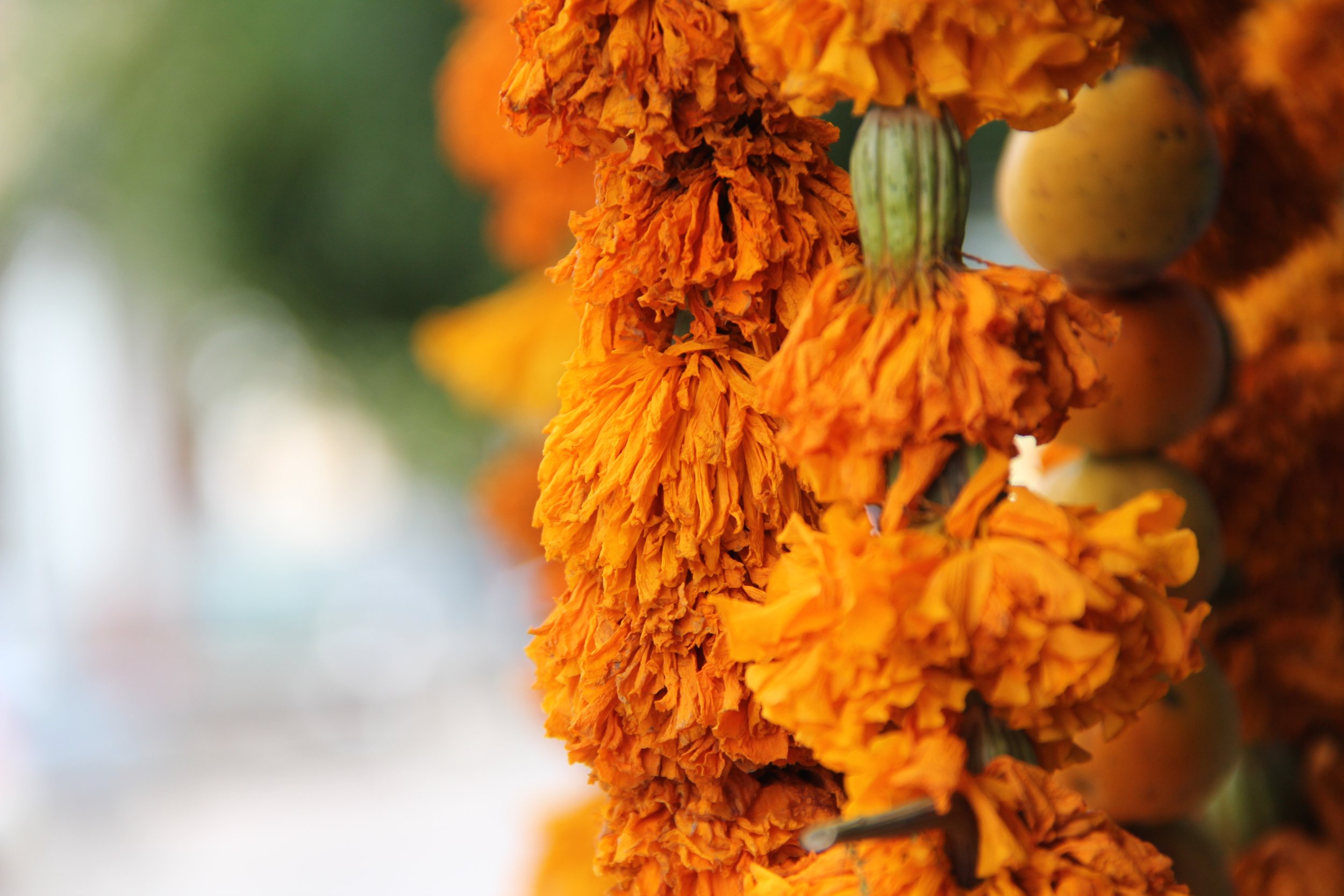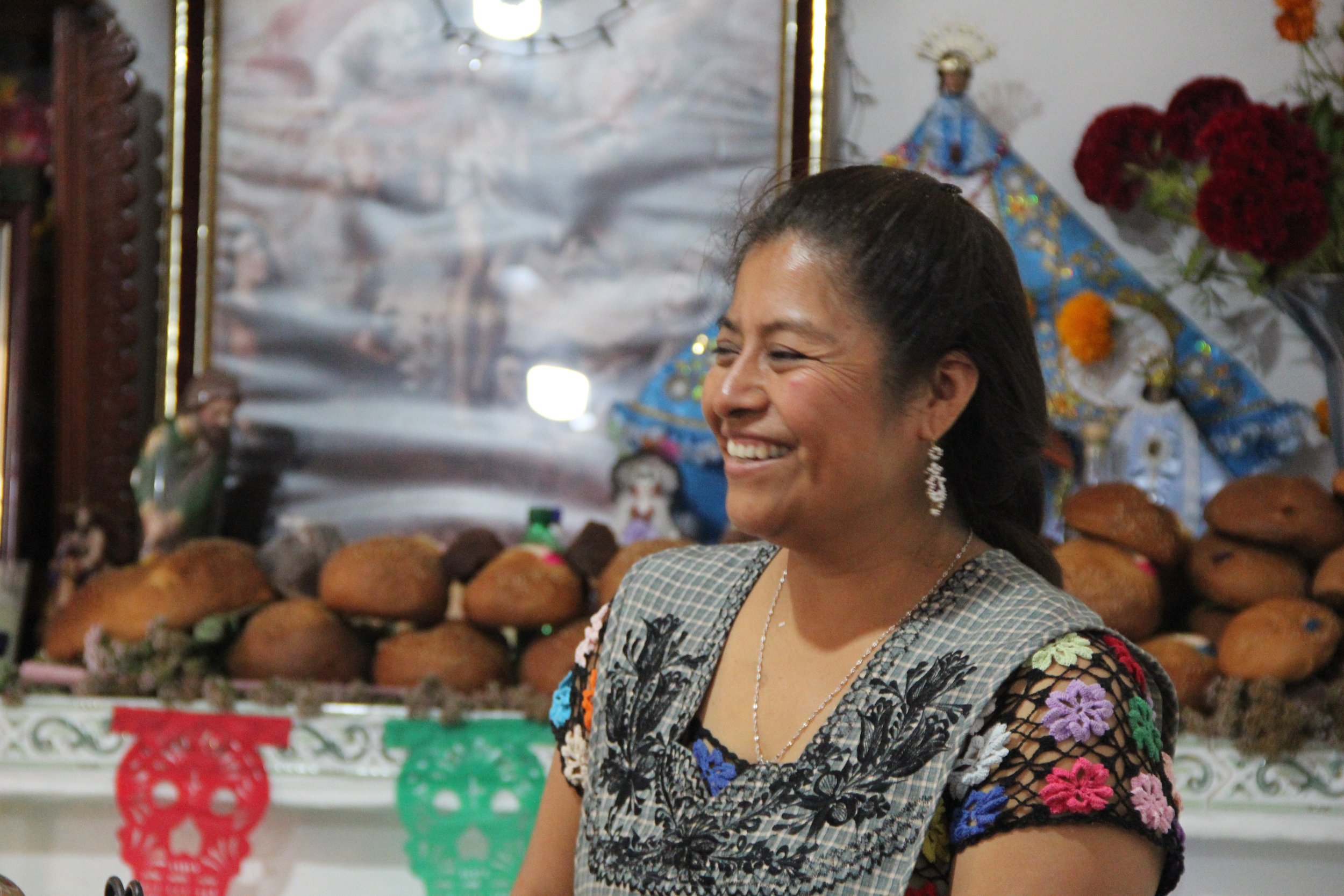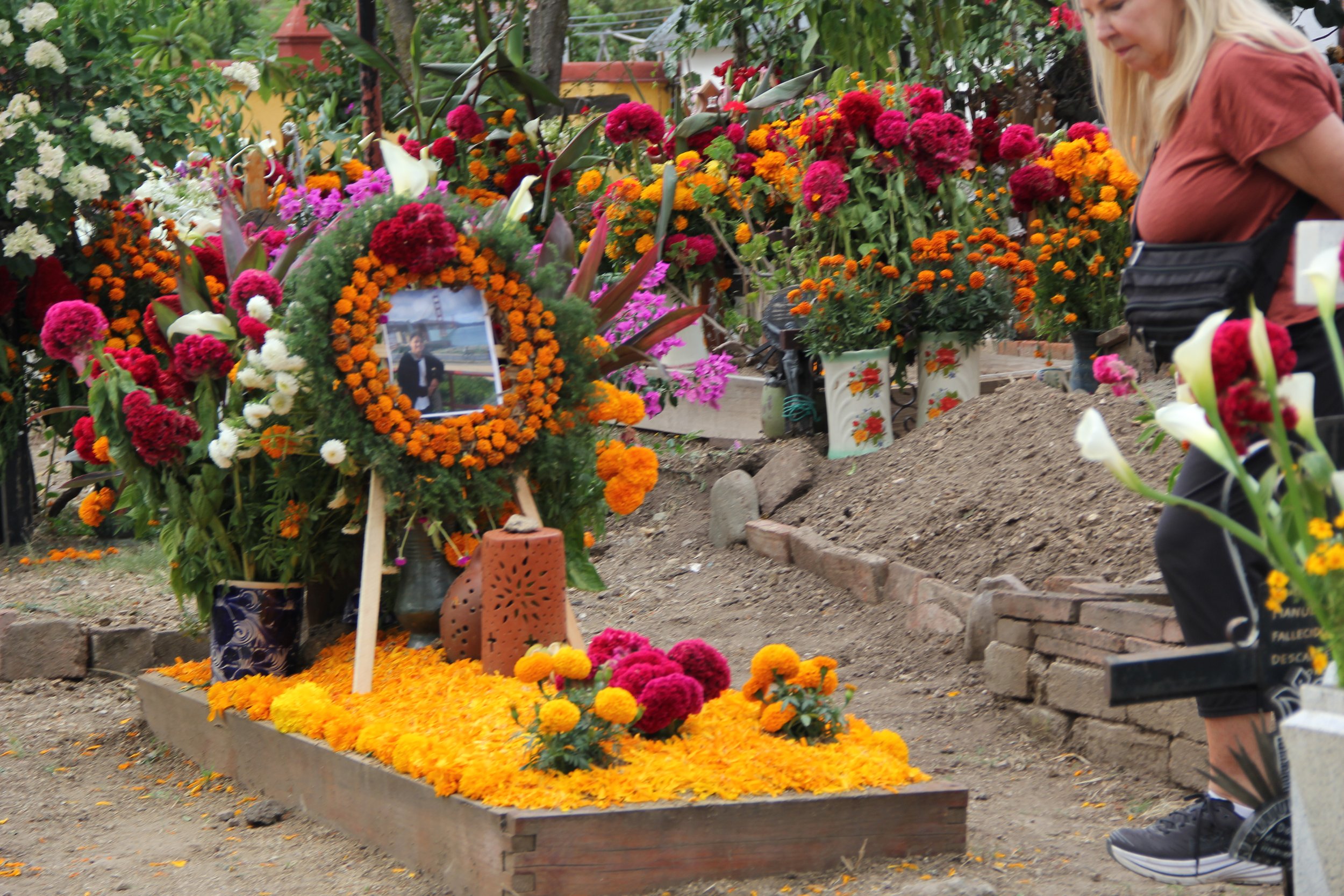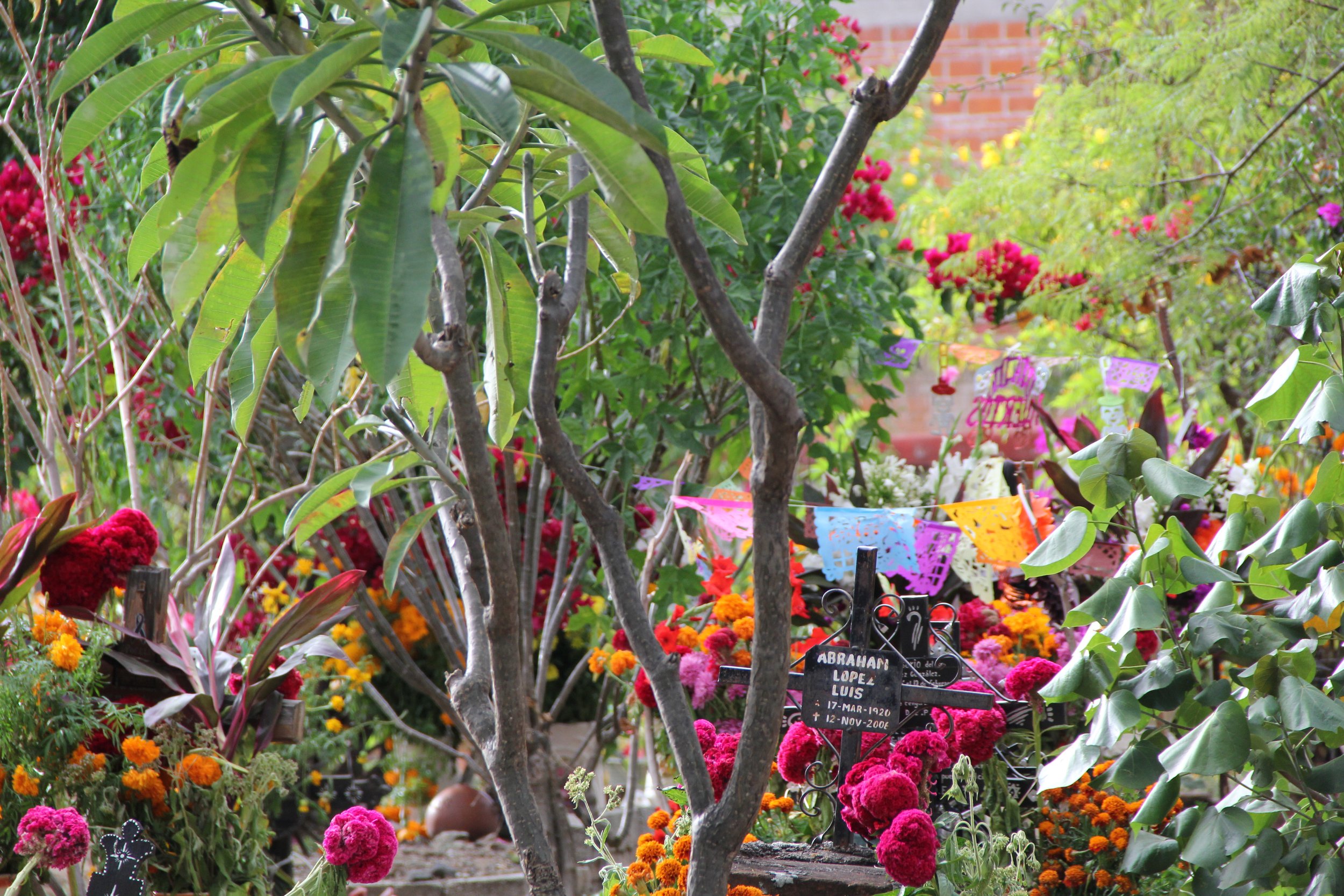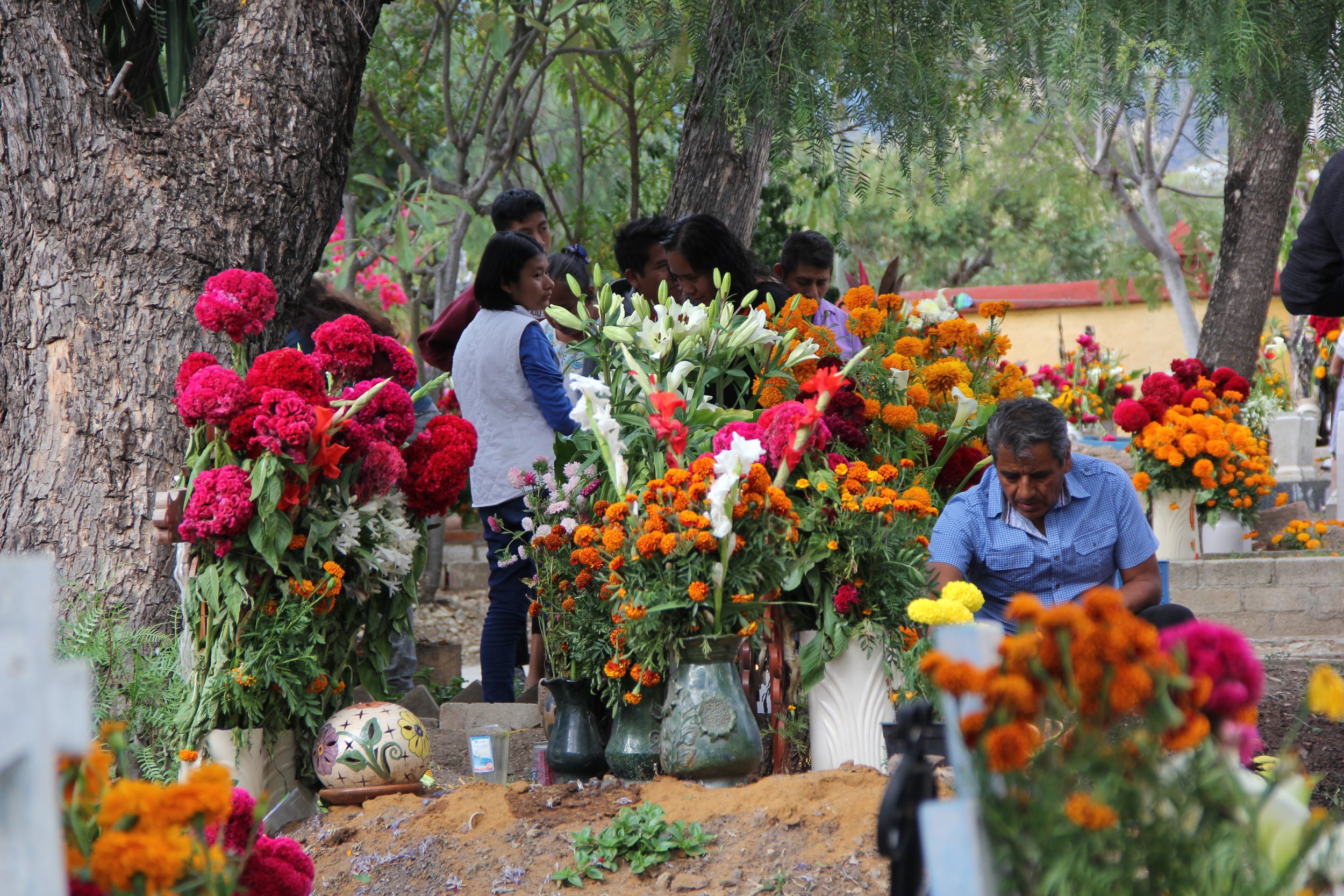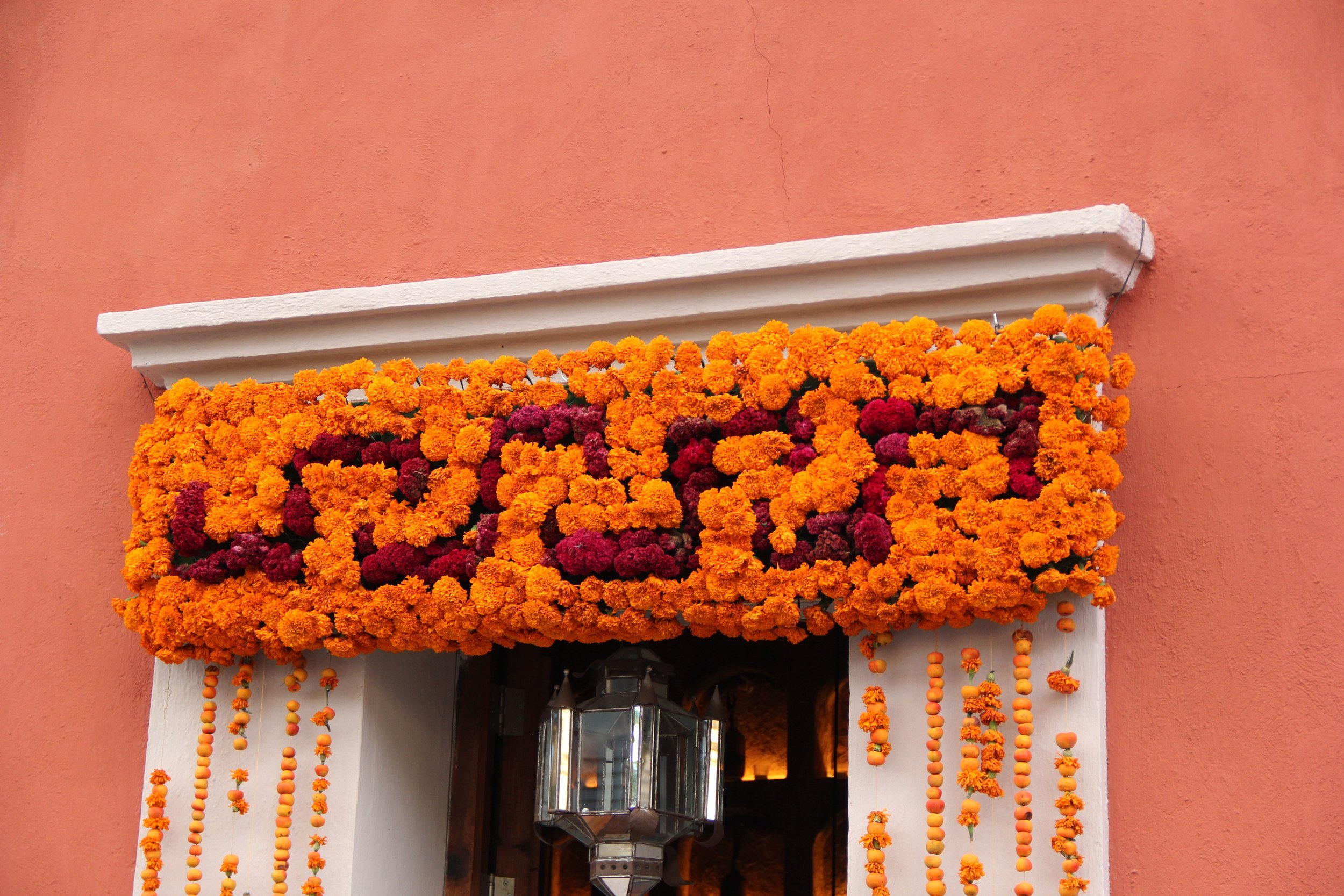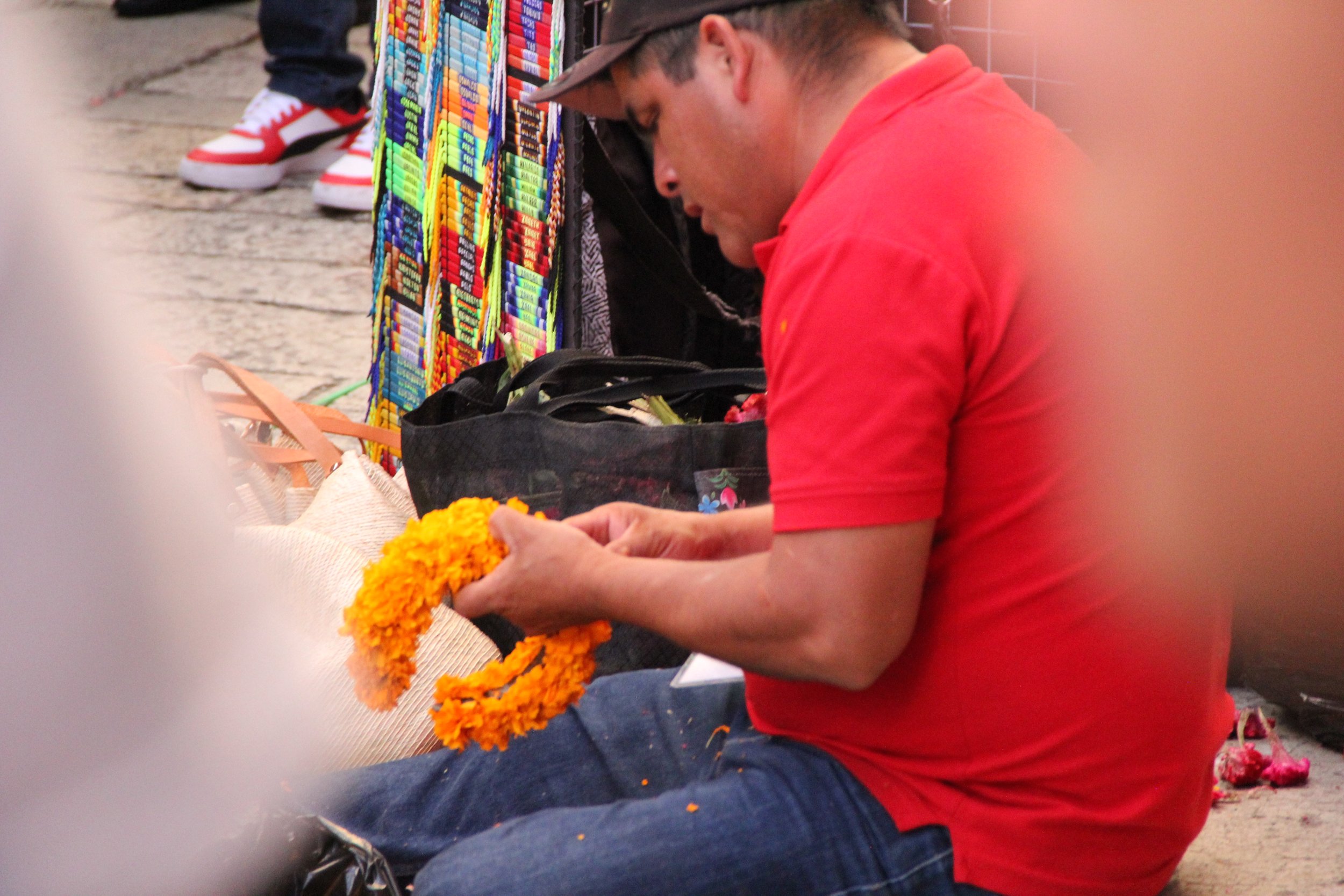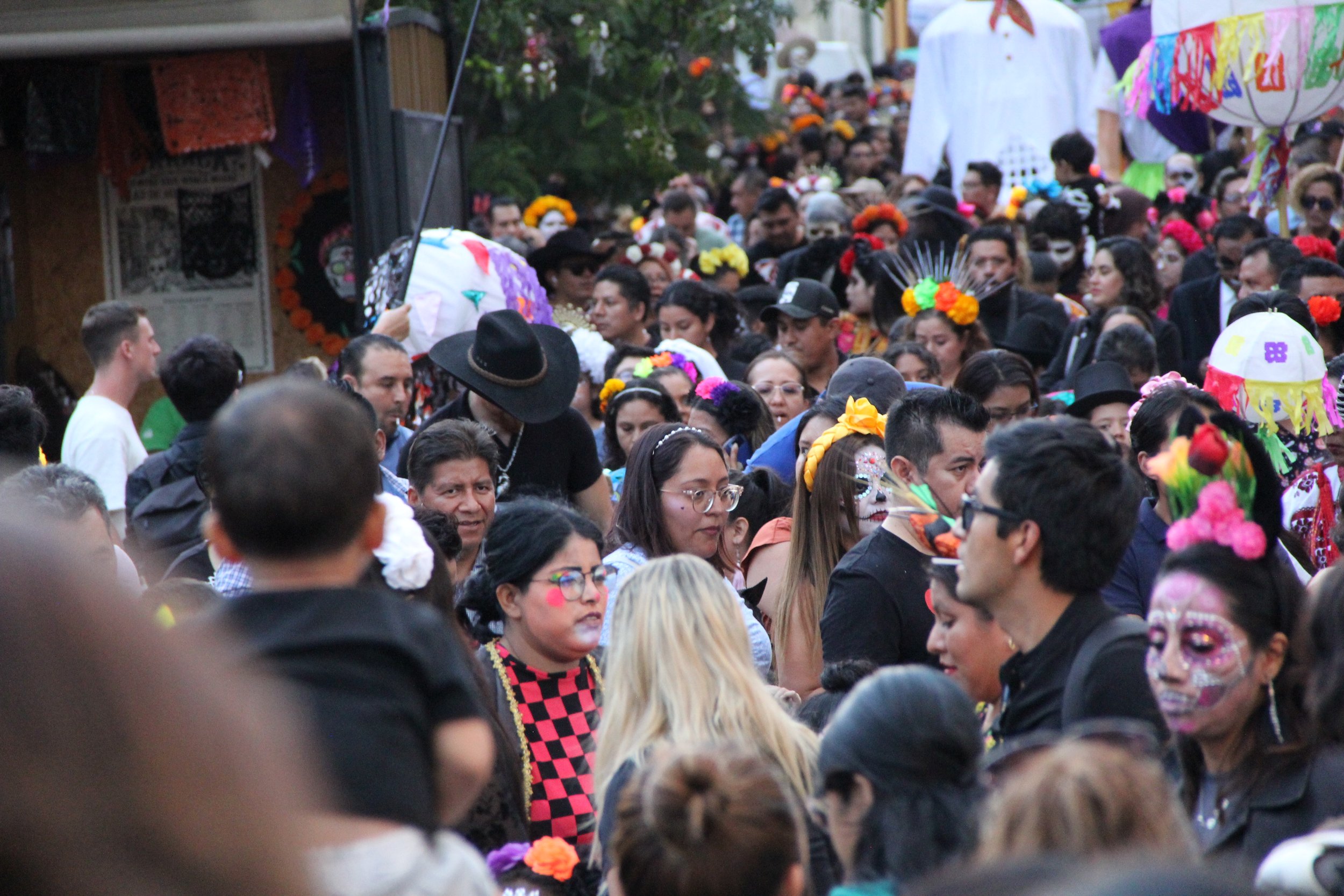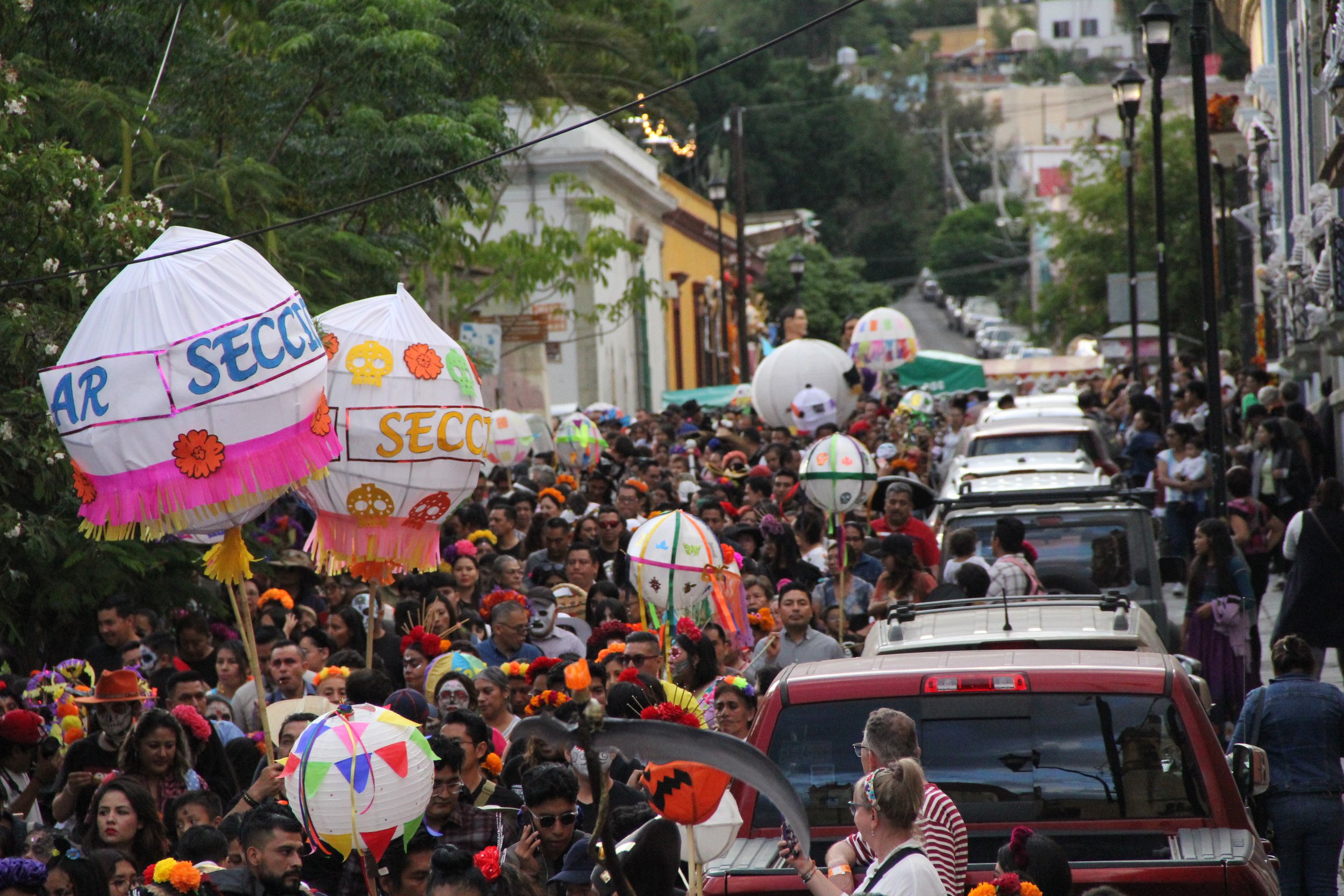CAMPESUCHITL: THE MARIGOLD’S RADIANT ROLE IN DAY OF THE DEAD
I recently had the privilege of visiting Oaxaca, Mexico, and it's an experience I won't soon forget. From October 31st to November 4th, 2023, I immersed myself in the mesmerizing world of Day of the Dead, a tradition that transcends the boundaries of time and space, celebrating life and memory in a way that's unlike anything I've ever encountered.
Capesuchitl hanging outside of Rito Chocolatería on Calle Porfirio Diaz.
My journey began with the understanding that Day of the Dead is not a day of mourning, but rather, a jubilant celebration of one's deceased loved ones. In Oaxaca, this celebration reaches its zenith, and I was about to witness the most beautiful and heartfelt tribute to the departed.
The Marigold's Radiant Role
One of the first things that struck me during my visit was the radiant presence of marigold flowers, or "Campesuchitl" as they are called in Nahuatl, the indigenous language of Mexico. These vibrant blooms adorned every corner of Oaxaca, from the bustling markets to the quietest of cemeteries. The marigold's bright, golden petals seemed to symbolize the warmth of the sun and its life-giving energy, infusing the entire celebration with a sense of vitality and connection.
Guitar player at the panteone (cemetary) in Teotitlan Del Valle
Historical Roots and Symbolism
As I delved deeper into the cultural tapestry of Oaxaca, I learned that the use of marigolds in Day of the Dead has roots that run deep, dating back to the Aztec civilization long before the Spanish conquistadors arrived. These flowers were sacred to the Aztecs and held a profound significance in their rituals. With the arrival of Catholicism, these indigenous traditions merged with Christian beliefs to create the unique holiday we now know as Day of the Dead. I was lucky to be able to experience part of this holiday in the town of Teotitlan Del Valle.
An offering we brought to the family we visited in Teotitlan Del Valle
While in Oaxaca, I volunteered with Fundacion En Vía, En Via works with female entrepreneurs in towns surrounding Oaxaca De Juarez (the city of Oaxaca), En Vía uses payment from guided tours to provide no interest micro loans to these women to help fund their businesses. The businesses range from chocolate makers to weavers to ceramicists.
On a guided trip to Teotitlan Del Valle (about 30 minutes outside of the city) we were welcomed into the home of Silvia. We brought an offering of Campesuchitl to Silvia and her family, we purchased at a market before we arrived. Silvia added the campesuchitl to the ofrenda before offering us rich tazas of chocolate caliente and mezcal for those who wanted it. :)
After being fed a delicious meal of vegetable soup, memelitas and cinnamon-infused custard, Silvia brought us to the panteone (cemetary) in her village where we were bombarded with Teotitlan’s beautiful celebration of the dead.
Imagine this: fireworks exploded loudly in the near distance as the bell struck 3pm on November 1st. Simultaneously, our eyes exploded with the rich carrot color of campesuchitl. The deceased loved ones would be returning for a period of 24 hours and the bells would be rung in the tradition of usos y costumbres for its entirety.
Campesuchitl is not just for decoration; it is an integral part of “ofrendas,” the elaborate altars created to honor departed loved ones. These petals create a path leading from the cemetery (or outside of people’s doors) to the ofrenda, symbolizing the souls' journey from the afterlife to the earthly realm. The marigolds also sometimes spell out the names of the departed, ensuring that the spirits know they are remembered and welcomed. Family is of utmost importance to people living in the villages of Oaxaca: even long after the death of loved ones.
The Grand Day of the Dead Parade
The highlight of my visit was the grand Day of the Dead parade in Oaxaca. The vibrant colors, ornate costumes, and the unmistakable scent of marigolds filled the streets. It was a sensory explosion of music, dance, and laughter, and I couldn't help but be swept up in the infectious energy of the parade. Marigolds decorated storefronts, ofrendas in the open doors of people’s home and even worn as crowns by locals and tourists alike and it got me thinking: how many marigolds does this holiday and festival go through and where do they come from?
What's the Economic Impact of Cempasúchil?
So, I prodded Chat GPT for some insights, and here's the gem it dished out:
"Look, if you're craving hard-and-fast figures about the whole marigold extravaganza in Oaxaca during Day of the Dead, well, you might need to roll up your sleeves and dig into agricultural and economic reports. Or better yet, put on your explorer's hat and embark on some thrilling field research."
The economic impact of this radiant bloom varies widely, mirroring the diversity of celebrations during Dia de Los Muertos. It's a financial story that's tailored to each region's unique traditions. So, no one-size-fits-all answers here.
While specific statistics are somewhat elusive, it's clear that the use and purchase of these marigolds are like the ripples of sunlight that grow good crops. They give a seasonal boost to cultivation areas, fuel tourism during the festivities, stimulate cultural markets, generate employment, and even spice up export markets. The overall effect is like a short-lived fireworks display—impressive, but limited to a specific time of year. Cempasúchil may not be a year-round superstar, but when it does shine, it takes center stage in the financial spotlight. 🌼💃
Conclusion
My journey to Oaxaca for Day of the Dead was a truly transformative experience. It shattered any misconceptions I had about this tradition and revealed it as a joyous celebration of life and memory. The marigold, with its rich history and profound symbolism, is an integral part of this celebration, and it serves as a reminder that the departed are not forgotten but cherished and celebrated.
Day of the Dead in Oaxaca is a testament to the beauty of cultural traditions and the power of remembrance. It's a celebration that honors the lives of those who have passed with vibrant colors, radiant marigolds, and a heartwarming sense of togetherness.


